-
Car Reviews
- All reviews
- Midsize SUVs
- Small cars
- Utes
- Small SUVs
- Large SUVs
- Large cars
- Sports SUVs
- Sports cars
- Vans
Latest reviews
- Car News
-
Car Comparisons
Latest comparisons
- Chasing Deals
The first electric BMW iX2 is here – does it deliver the goods as a premium EV, and why would you choose it over a cheaper iX1?
Move over SUVs. Make way for the SAC!
What is an SAC? That would be a Sports Activity Coupe, the title BMW bestows on its X2 and iX2 (plus the X4 and X6) – essentially, the swoopier-styled coupe-SUV variants of its more traditional and upright crossover models.
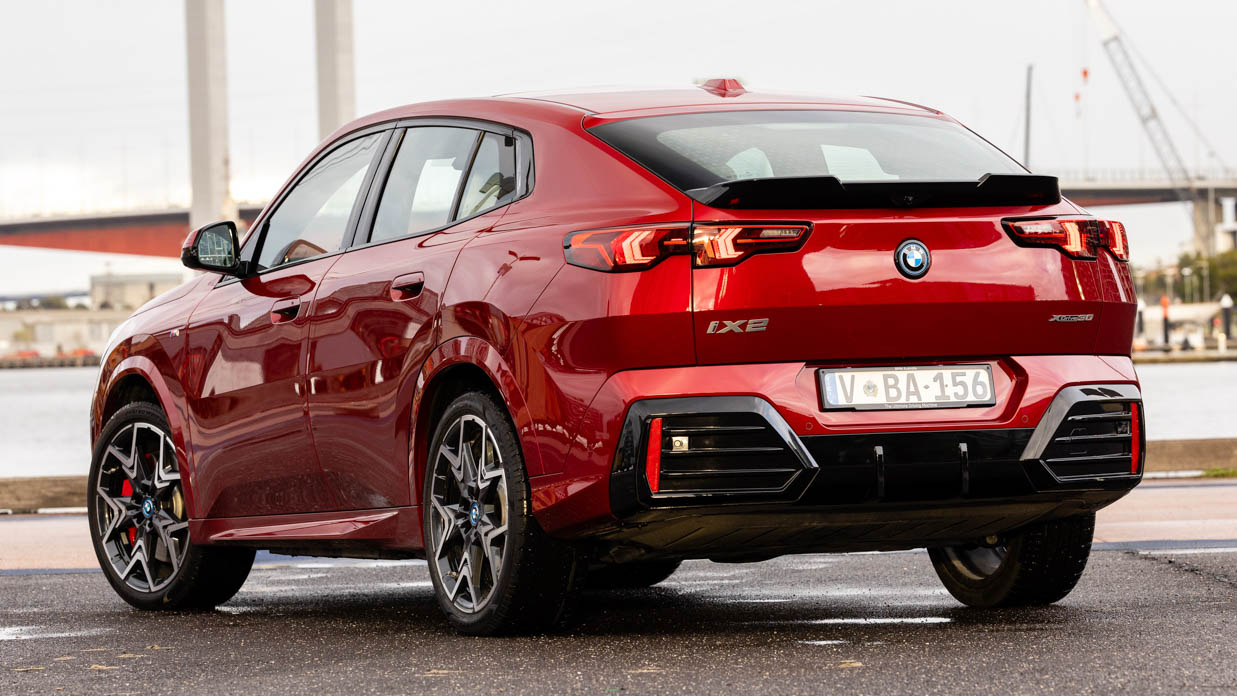
Where the electric BMW iX1 is pragmatic and family-focussed, the iX2 offers a slinkier, more interesting (if not always beautiful) roofline while maintaining the presence, and pretense, of rugged SUV styling.
Compared to the funky but less sharply-raked first-gen BMW X2, which was only available with petrol engines, the second-gen model ushers in both the option of fully-electric power and an even more aggressive stance.
With the electric iX2, BMW’s growing electric lineup is now bolstered even further – the brand boasts 16 BEV variants on sale in Australia in 2024 across the iX1, iX2, iX3, iX, i4, i5 and i7 nameplates.
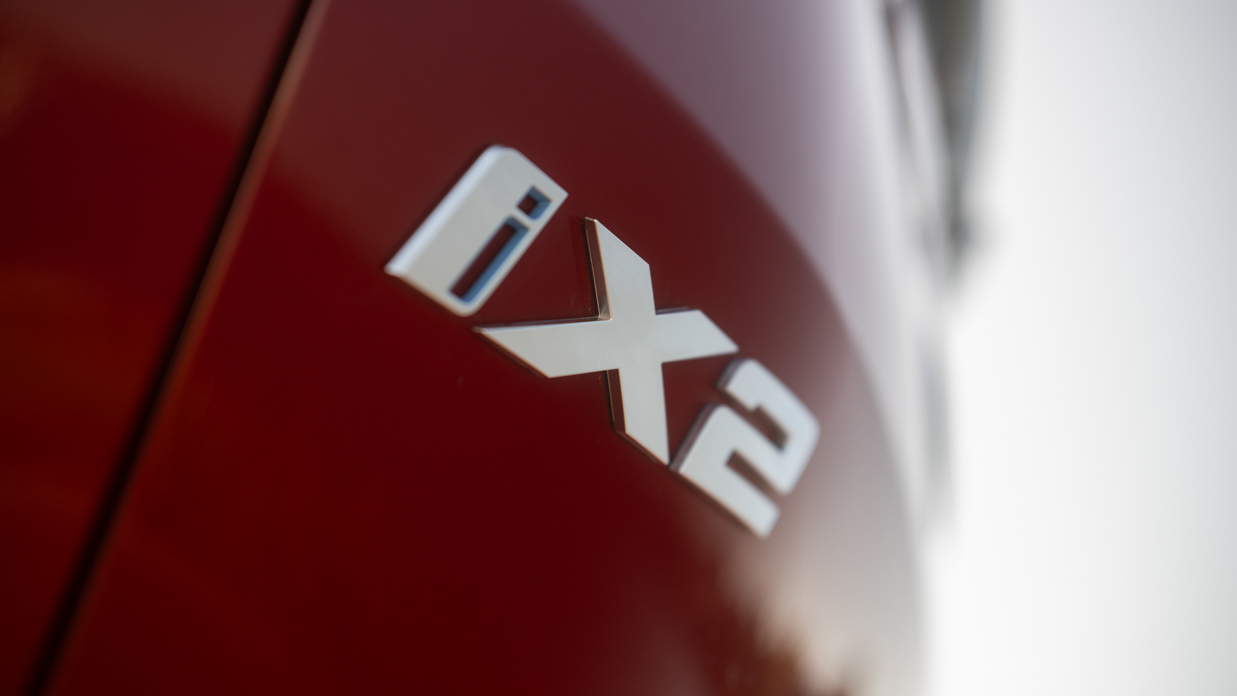
Six of those 16 electrics are priced very aggressively, below the luxury car tax threshold – a key marker, below which leasing customers can access a hugely attractive full fringe benefit tax waiver.
When compared to traditional rivals Audi and Mercedes-Benz, it is staggeringly impressive how quickly BMW Australia has been able to mount a convincing range of electric models that qualify for key incentives.
The iX2, available in front-wheel drive eDrive20 format ($82,990 before on-road costs) or as an all-paw xDrive30 as tested ($85,800 before costs) is an important part of that strategy, especially when it comes to attracting younger singles and couples.
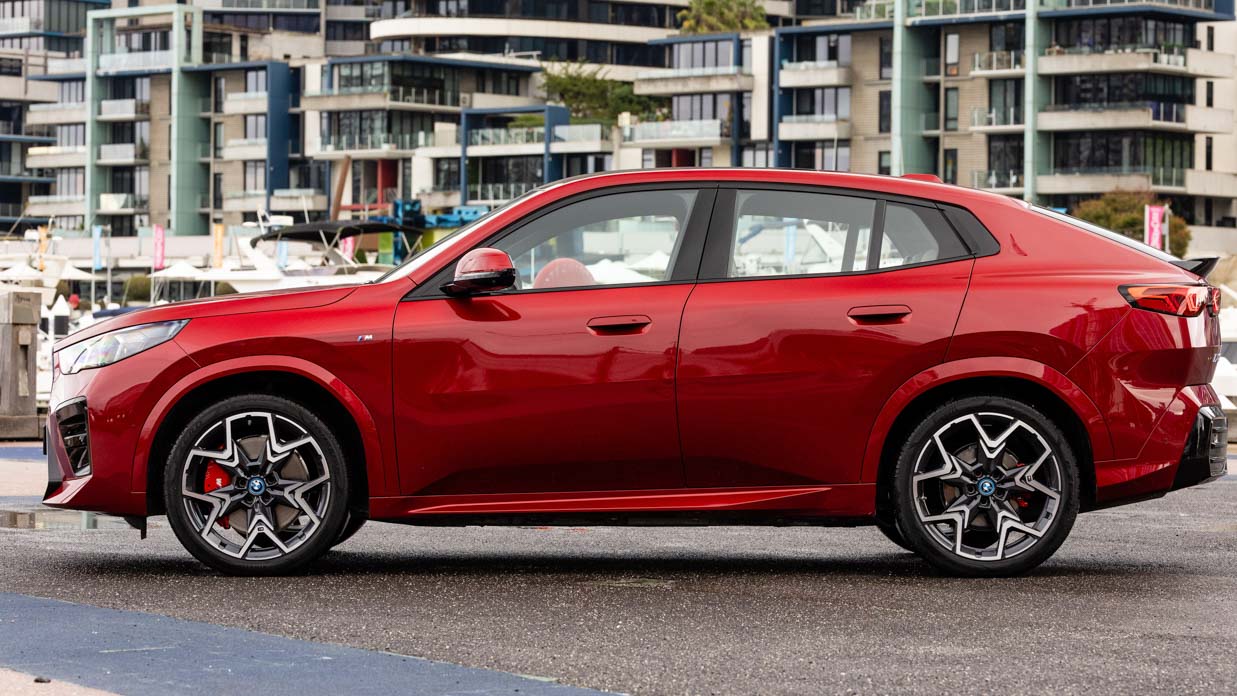
Compared the more sensible iX1, the more indulgent iX2 looks to compete with the Volvo C40 and Lexus UX300e – and of course petrol options like the Audi Q3 Sportback.
Testament to the more style-focused – and also sportier – intentions of the iX2 (and the petrol X2 that will be sold alongside it), all variants are standard with an M Sport package in Australia. By contrast the X1 can be optoined with a more traditionally handsome xLine trim.
Granted, the X2’s ‘SAC’ styling won’t be for everyone – though it’s definitely bold and makes a statement as a bit of a shrunken X4/X6.
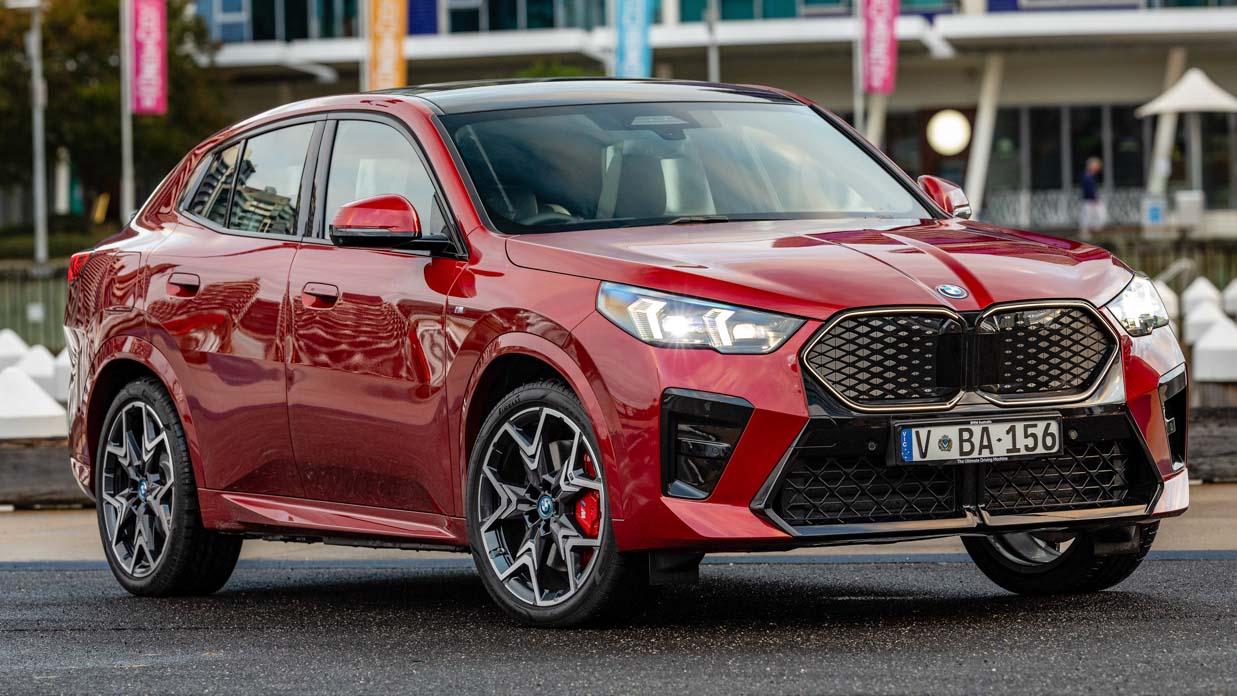
In its new generation, the iX2/X2 are also bigger than the car it replaces (+194mm longer) and also the iX1/X1 (+54mm longer), the bigger proportions also now making a bit more sense within the product hierarchy too.
So, as the EV market continues to mature and competition intensifies, we’ve been able to get our very first taste of the iX2 on local Aussie roads.
We were able to sample the iX2 xDrive30 variant on a day-trip around a 200km stretch of windy Tasmanian roads to get a sense of whether it nails the brief as a premium, style-focused electric SUV, and whether it should be on your shortlist.
The BMW iX2/X2 launch with a three – soon to be four – model lineup for their new-generation, with two petrol variants in the xDrive20i and the top-of-the-range M35i xDrive book-ending the lineup, and two electric variants sitting in between.
One of these will be a cheaper, longer-range single-motor variant – the iX2 sDrive20 – which will debut in the second half of the year priced at $82,900 before on-road costs, but for now the iX2 launches with its more powerful dual-motor version, the xDrive30.
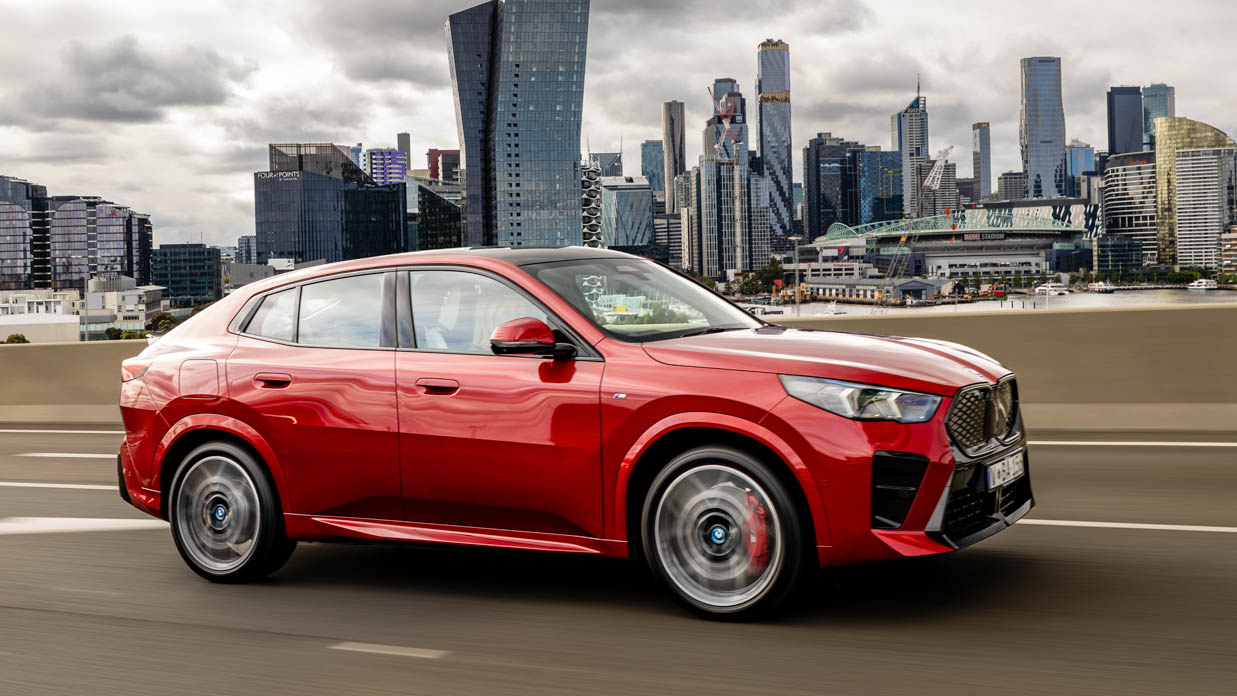
The xDrive30 will set you back $85,800 before on-road costs, and crucially, it’s priced below the luxury car tax threshold for fuel efficient vehicles.
Australia is unique in the BMW world for having both iX2 powertrains sit closely together in price and BMW executives have hinted the AWD version’s price could increase if the luxury car tax threshold is increased later in 2024 – as it is expected to.
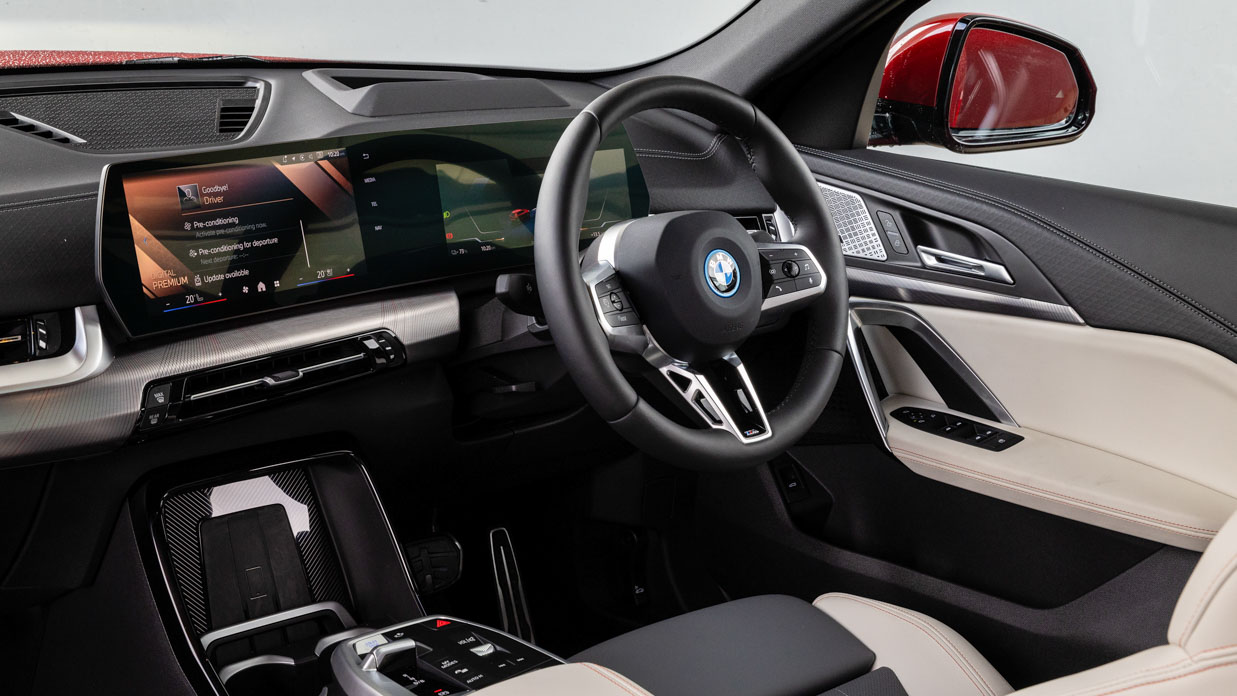
Plus, the exact model we have on test today is a fair bit more expensive than its sticker price thanks to some optional extras that drive costs north.
Before we get to those, let’s take a look at some of the features you can expect as standard on the xDrive30:
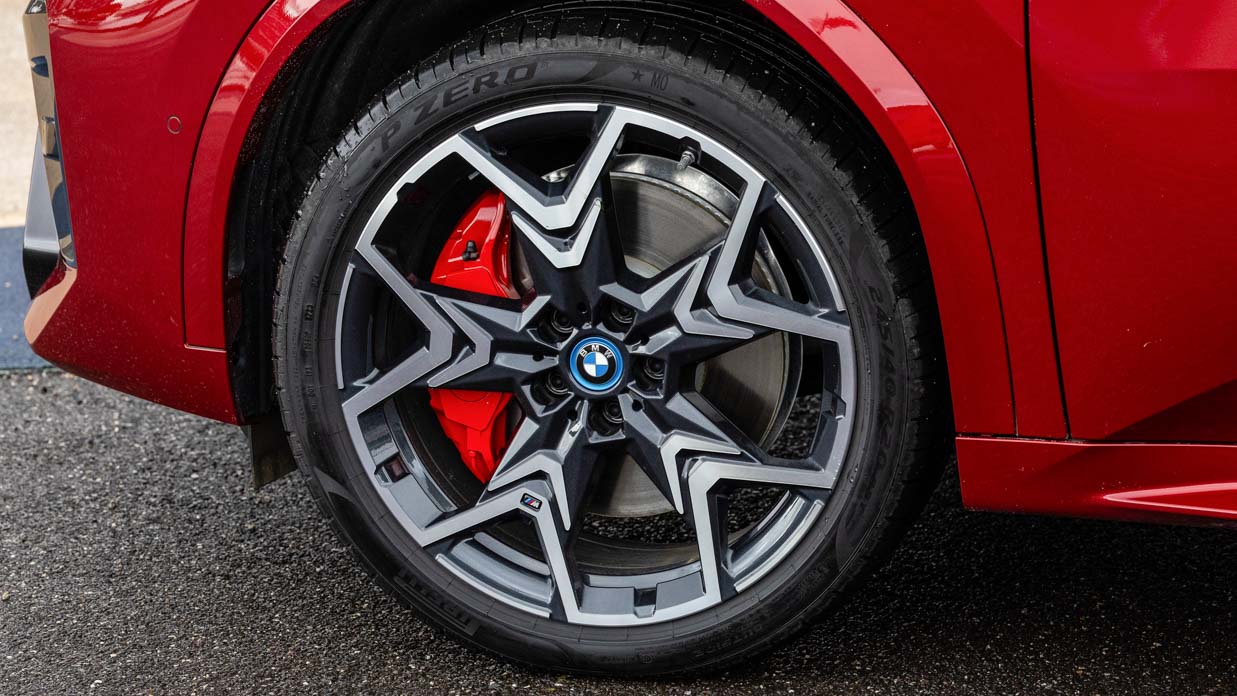
An M Sport package is also standard on the iX2 in Australia, complete with features like 19’’ M light-alloy wheels, a front and rear bumper panel with M-specific design, M identification on the sides, and a rear spoiler in high-gloss black.
On top of this, our test vehicle was specified with two option packs including an Enhancement Package (+$4700) which brings with it:
In addition, our car also had an M Sport Pro Package ($4900) which adds:
Basically, if you’re trying to nab an iX2 xDrive30 for less than the luxury car tax you can forget about these option packs, as they blow the price well over the circa-$92,000 hard barrier including on-road costs.
So a test car like ours with both option packs will really only appeal to buyers who don’t qualify for federal incentives anyway.
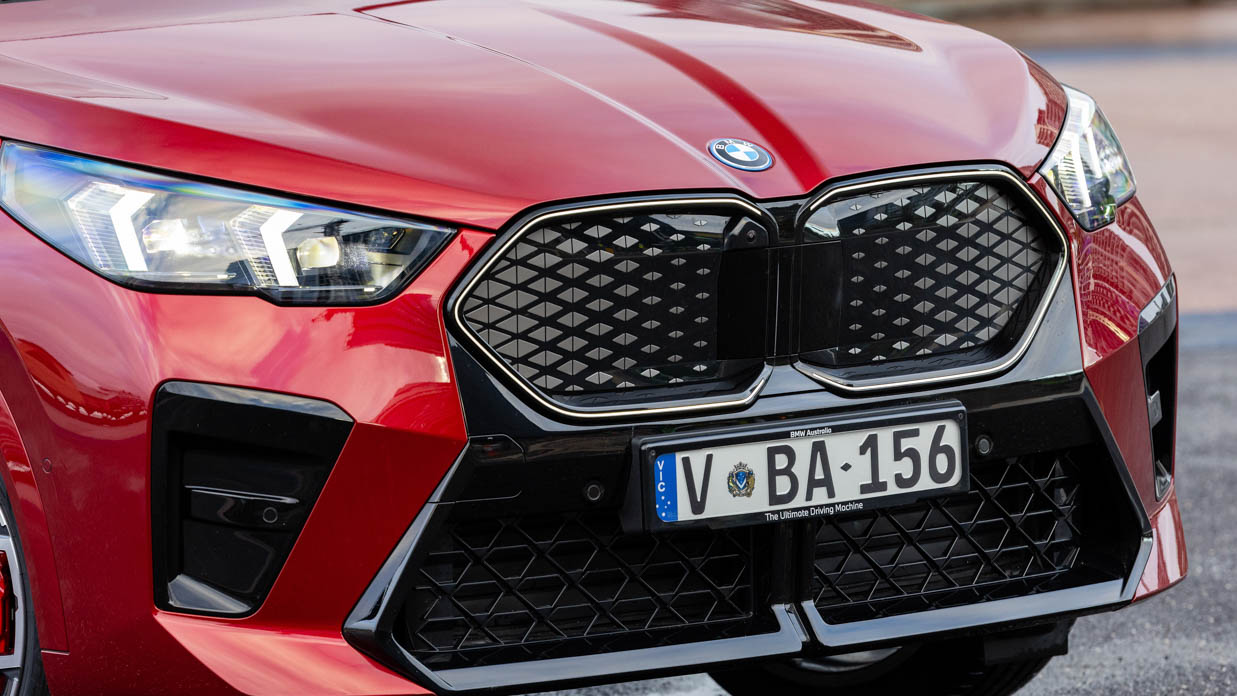
Our full-fruit tester was just over $100,000 driveaway, which is notably far more expensive than the considerably more powerful Tesla Model Y Performance (from $89,100 driveaway).
The BMW is already pretty well-specced in its standard iteration, so I’d be inclined to keep the option packs to a minimum – though the upgraded audio system, sunroof and lumbar support with active massage function were appreciated on the initial launch drive.
The dual-motor iX2 xDrive30 has one electric motor on each axle, delivering total outputs of 230kW/494Nm and a claimed 0-100km/h sprint of 5.6 seconds.
That makes the electric xDrive30 only slightly less powerful than the 233kW/400Nm range-topping petrol-powered M35i xDrive.
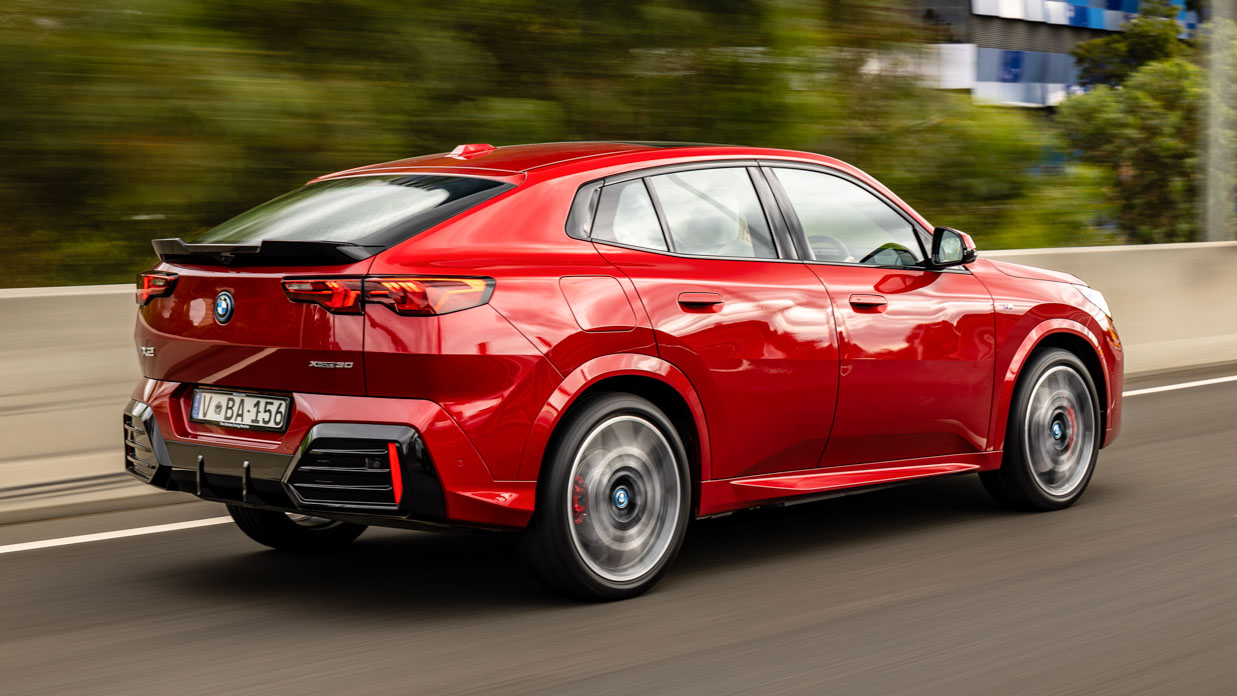
Notably, the iX2 weighs 325kg more than the petrol X2 with AWD – though we are surprised the delta isn’t more substantial.
Unlike its ICE siblings, the iX2 features a 64.7kWh usable battery pack which has a WLTP claim of 417-449km, however BMW Australia has decided to quote a lower 395km range claim for our market.
Officially, electricity consumption when driving is rated at 15.5kWh/100km (WLTP) or 16.4kWh/100km (BMW Australia). Those sorts of numbers are acceptable and reachable if you drive mostly in town, where EVs tap into regen braking frequently.
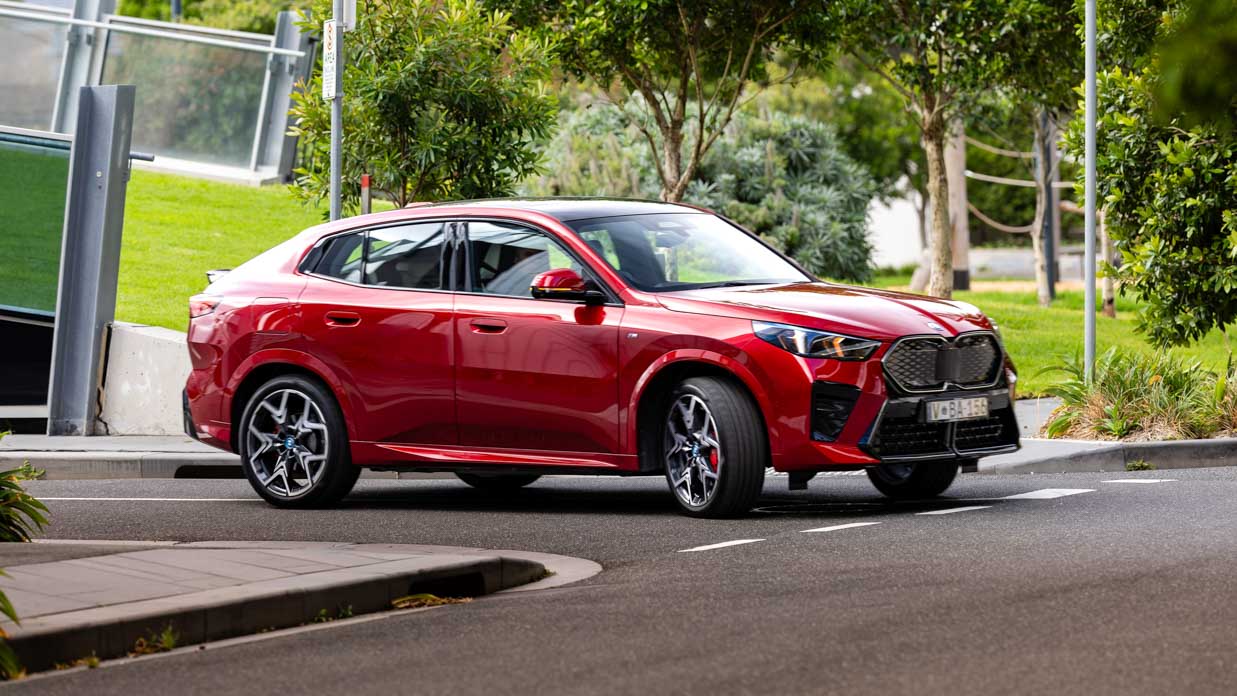
On our high-ish speed, rural launch drive, we scored 20kWh/100km for a realistic country touring range of 323km, which is on the limited side. Careful planning of charging stops would be required.
Naturally, we look forward to putting these range and efficiency claims to the test for a more conclusive result when we get the iX2 into the Chasing Cars garage for longer, but if range is a factor for you – the more efficient, longer range single-drive eDrive20 could be the one to go for.
But how did it drive?
Well, overall quite pleasingly, if not overly memorably – it’s just a solid BMW SUV driving experience.
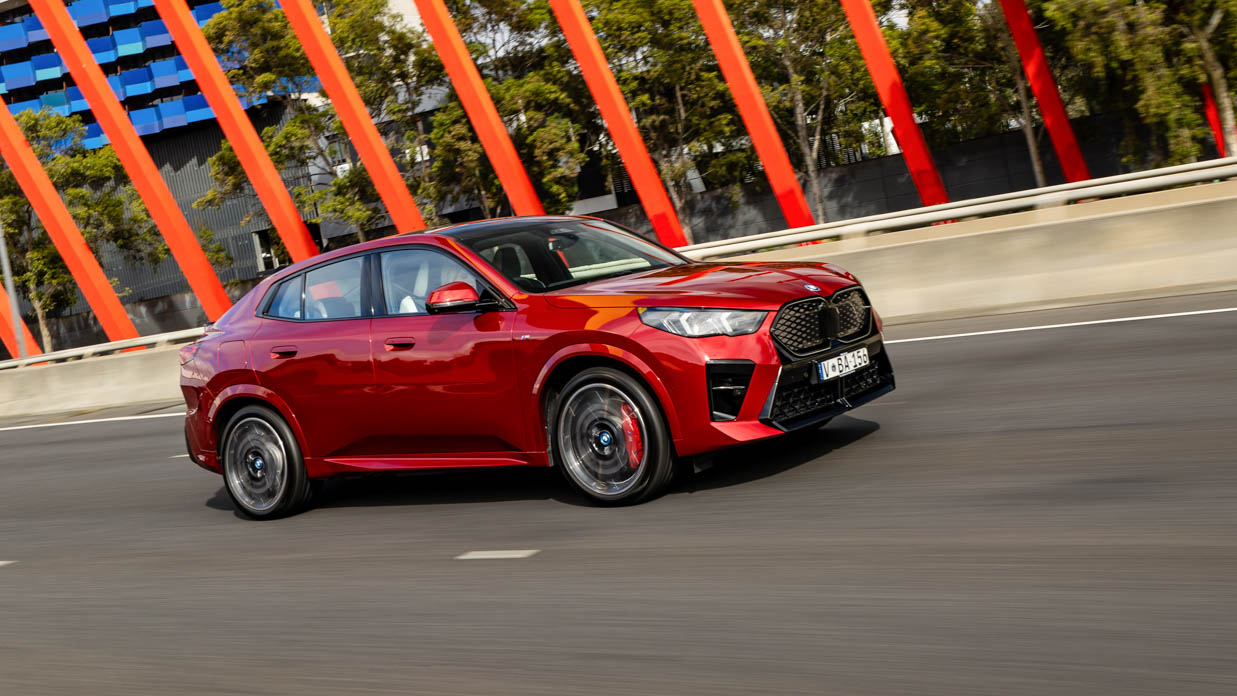
Getting things moving, the iX2 has smooth and progressive power delivery that generally feels pretty effortless. It’s definitely got plenty of oomph for an urban SUV with its sub-six second 0-100km/h sprint time.
It’s not lacking in power and once you are moving it has the feeling of a quiet, refined and well-engineered vehicle.
The xDrive30’s ride and handling balance is also sound – the ride has a nice mixture of compliance and firmness to it, and the handling feels taut and controlled when navigating a decent set of bends.
Despite its additional weight over petrol variants – with the xDrive30 weighing in at just over 2000kg – it had the feeling of a decently keen and competent handler.
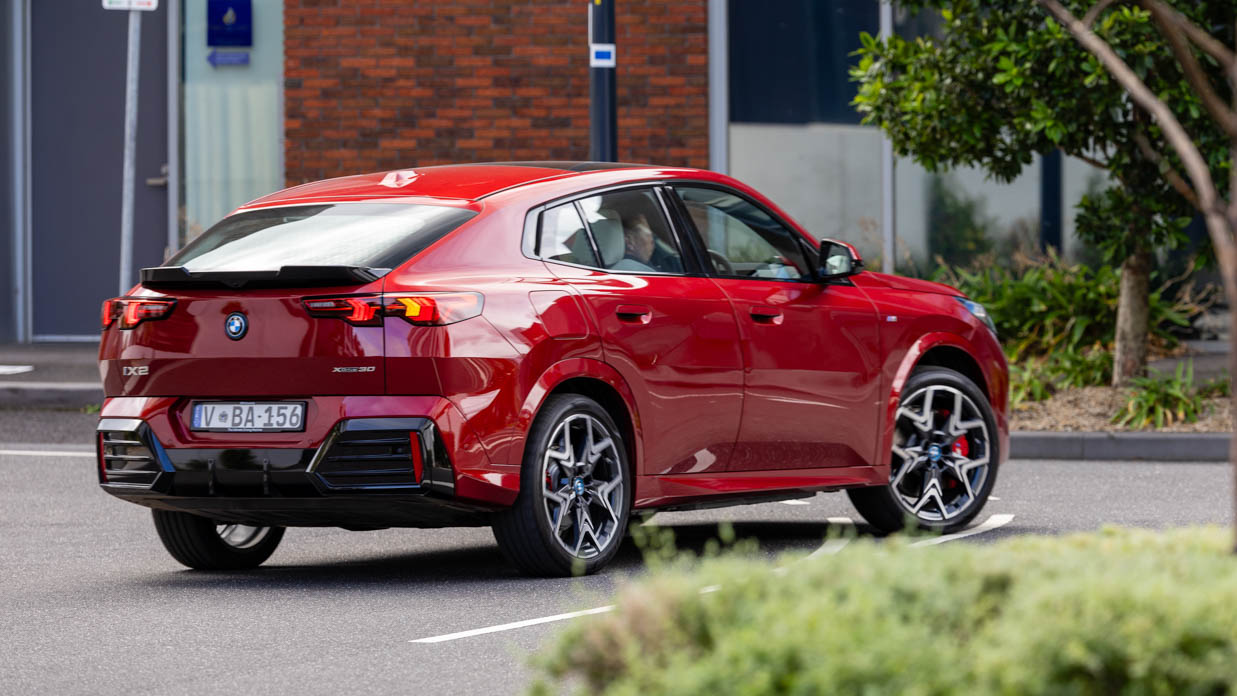
If nitpicking, perhaps the steering could use more feel – but overall I think most drivers will appreciate the lightness in the rack. As the main point of interaction with the car, it’s a sharp, quick, direct and effective system delivering an easy-to-drive, fuss-free experience.
The brakes also felt strong and predictable underfoot and refinement levels were high overall in what felt like a well-insulated cabin. The forward-visibility is also good and it’s easy to find the right driving position, though rear visibility isn’t the best given the swoopy design.
The xDrive30 is equipped with adaptive dampers as part of its different drive mode settings, of which there are six – the conventional personal (ie normal/comfort), sport, and efficient, and also ‘expressive’, ‘relax’, and ‘digital art’ if you want to inject some novelty into your life.
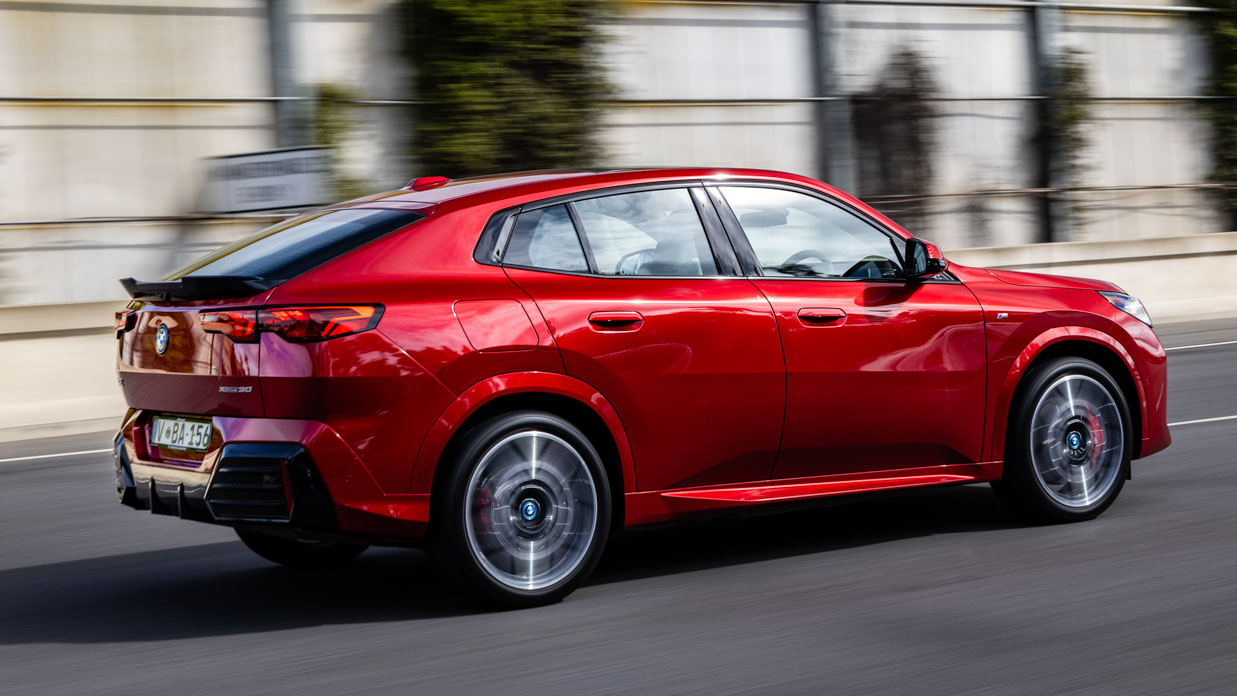
Changing drive modes will alter settings for elements like the suspension and steering, but also elements like the mood lighting, media graphics, and aural experience – which is where the latter three settings come to life most.
Realistically though, in the short time I had with the car, aside from a quick experience of the latter three modes, I predominantly toggled between personal and sport, which amplifies acceleration and steering and stiffens the suspension.
The differences didn’t seem too pronounced to me until we got to some more undulating country roads, where switching from sport into normal did make a difference to comfort levels.
As well as drive mode settings, drivers can use the single steering wheel mounted paddle to initiate a boost mode which delivers maximum power for 10 seconds, with a countdown displaying on the digital instrument cluster.

In some ways it’s a tad gimmicky, but I won’t lie – it was a bit of fun. Perhaps that would wear off, though when really needing to get the jump into fast moving traffic it definitely doesn’t hurt.
Aside from the different drive modes and boost functionality, you can also switch between three levels of regenerative braking depending on if you want a more conventional petrol-car like experience or a more one-pedal style driving mode.
Or, you can also set it to an adaptive mode which lets the vehicle judge the appropriate level of regen based on the traffic situation around you.
So, as an overall drive experience, the iX2 delivers the goods to satisfy the demands of what most drivers will need from an urban SUV – but that’s just one part of the equation – how comfortable and practical is the interior?
BMW has been on a roll when it comes to interiors for several years now and the new iX2 continues this positive trend. Mostly.
Instantly recognisable as a current-generation BMW interior, the iX2 boasts solid build quality, pleasant materials, and a pleasing interior aesthetic which also works well ergonomically.
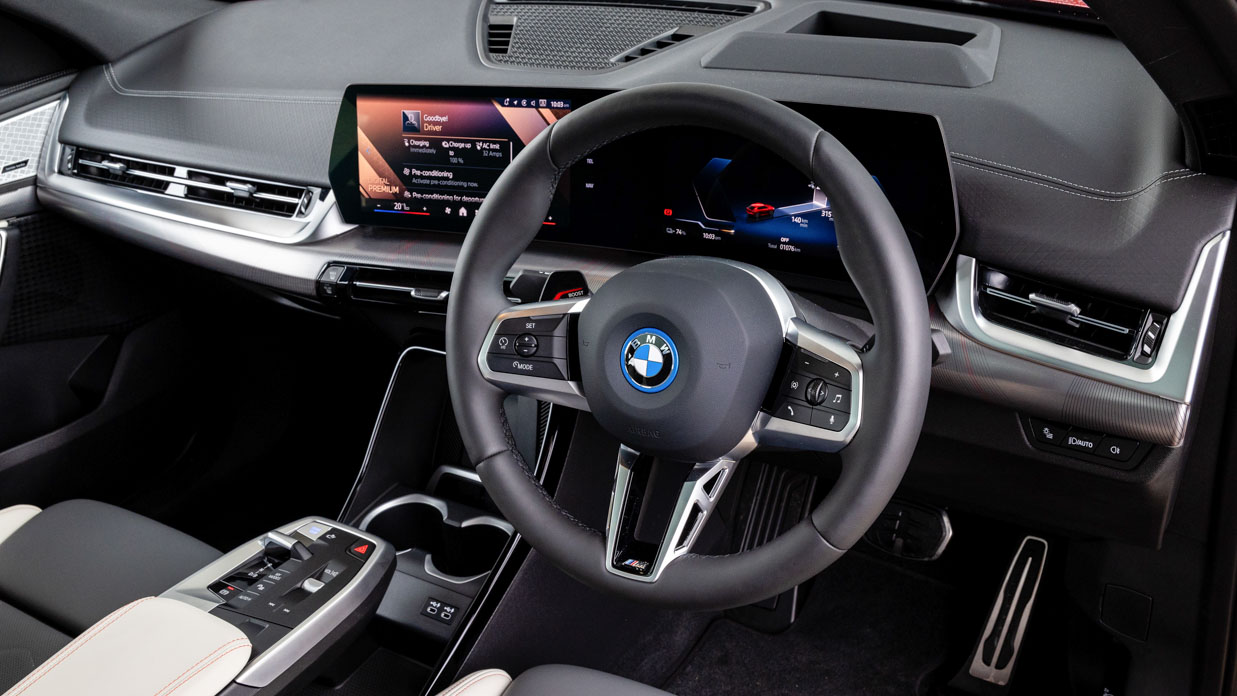
From a tech perspective, the headline feature is BMW’s familiar curved digital display panel that incorporates a 10.25-inch digital instrument cluster and 10.70-inch touchscreen media display.
BMW was quick to note that the iX2/X2 will roll out the latest iDrive 9 operating system which brings with it some key changes based on customer feedback including a quick select menu and optimised functionality for easier access to certain features.
Unlike BMW’s more expensive models like the 3 Series, 5 Series and 7 Series, the iX2/X2 – like the iX1/X1 – no longer feature a rotary dial controller on the centre console. It means that all operation of the media system has to be done through the touch screen.
That’s a shame, for me at least, as I liked having the ability of a physical dial to work through your commands, especially while on the move when it can be harder and more dangerous to operate a touchscreen.
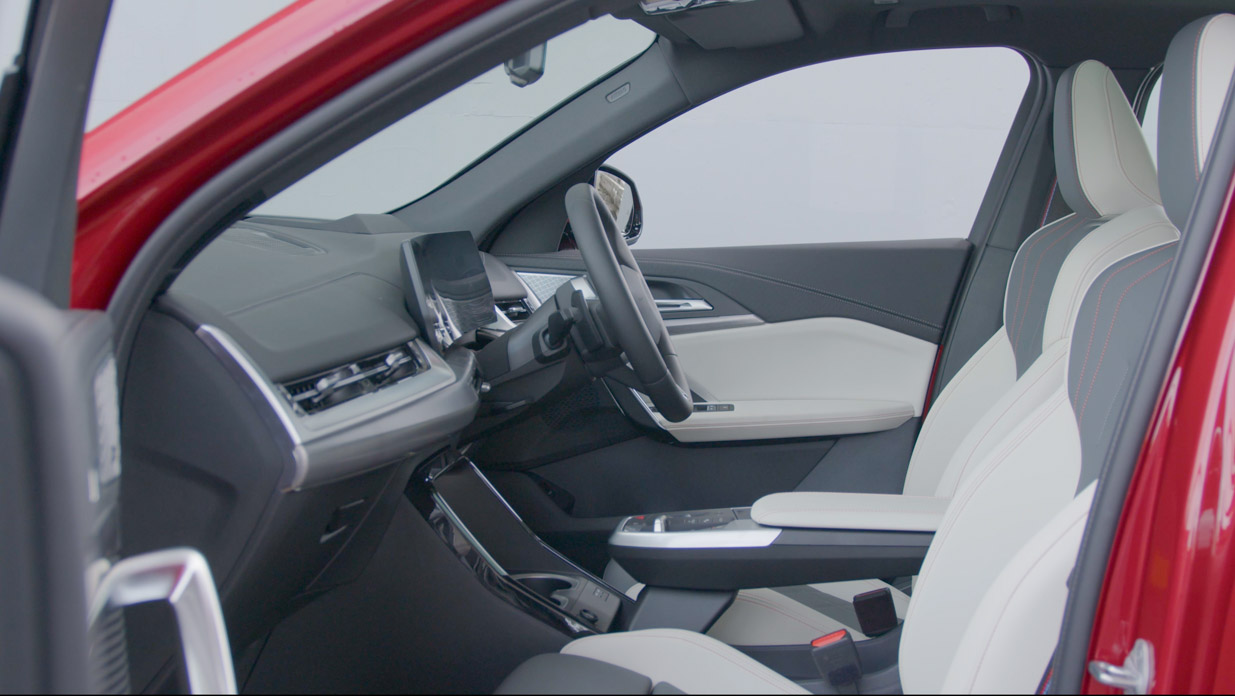
However, overall I found both displays to work well – clear, crisp graphics, lots of customizability, and quick operation. As far as media systems and touchscreens go, no initial complaints.
In terms of comfort, the iX2 offered supportive front seats which coupled well with our windy countryside journey.
The cabin felt solidly and firmly built, and nice to the touch, although the steering wheel – while a lovely design – did feel overly thick, a common BMW trait which I’m not a massive fan of.
Storage was decent, with a raised centre console revealing an open section beneath it and an armrest on top also housing key commands like buttons to select your drive modes, a volume knob and a tiny little gear selector.
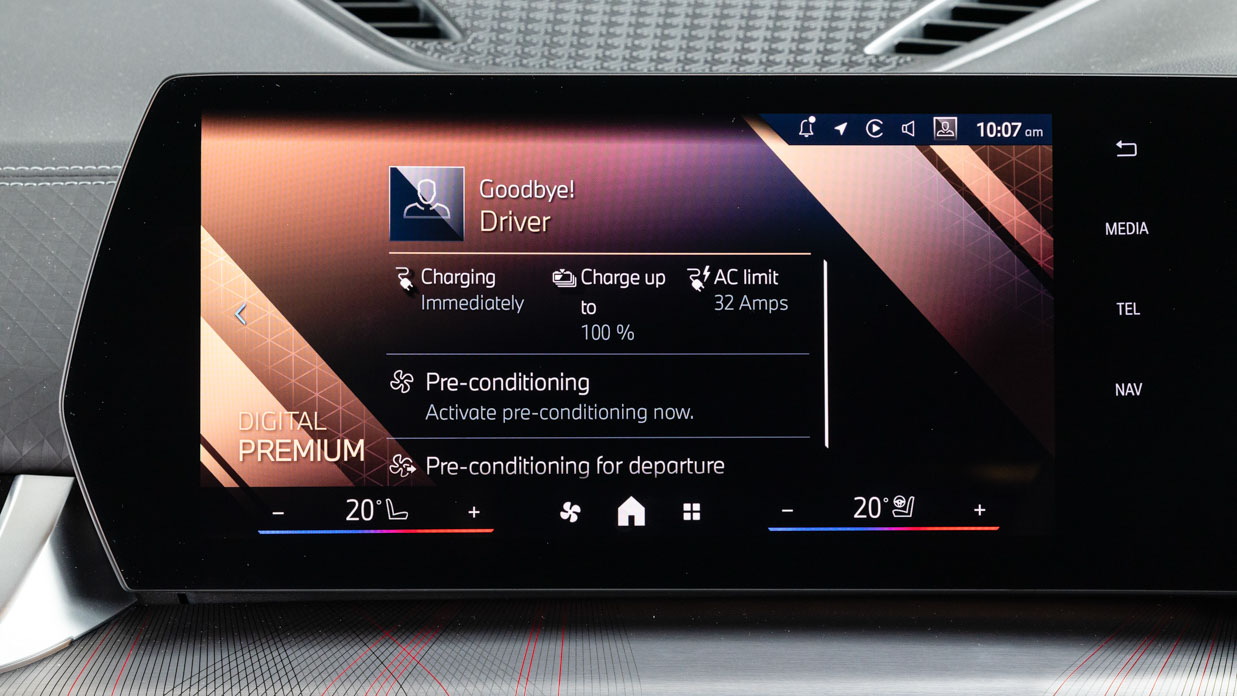
While the media system has taken control of much of the vehicle’s functionality, the experience is not completely devoid of physical controls.
All of the remaining tangible buttons and controls, like the aforementioned buttons on the centre console, and those on the steering wheel, are pleasant to interact with.
The climate control temperature settings are also at least permanently displayed on screen for ease of access.
Customers have the option of customising the iX2 interior to their own personal taste, too.
There is the choice of several interior colours for the animal-free Veganza perforated vinyl interior including black, oyster, mocha, and our test vehicle’s bi-colour combination of atlas grey/smoke white (exclusive to iX2/X2).
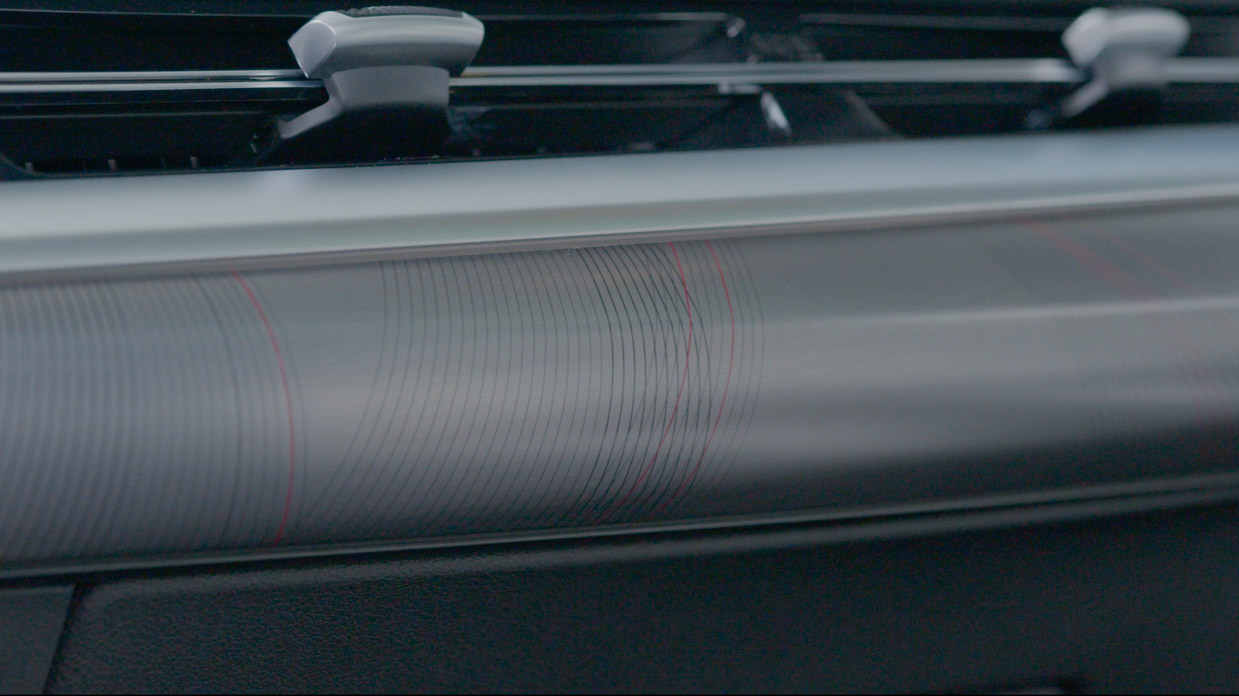
That was matched with an aluminium interior trim with graphic highlights in our test car and it all looked quite nice, adding to a lighter cabin feel.
Rear-seat passengers are treated to relatively decent amenities including rear air-vents, two USBC ports and a fold-down armrest with cupholders.
As part of its launch literature, BMW is quick to spruik the iX2/X2’s dimensional growth for the the-generation compared to the first-generation, which was 194mm shorter.
However, at 183cm, I felt the compromise of the coupe-like styling in the rear with a tight fit in terms of headroom and toe room. It wasn’t the most spacious cabin for me in that regard, but sitting behind my own driving position I had just enough leg and knee room.
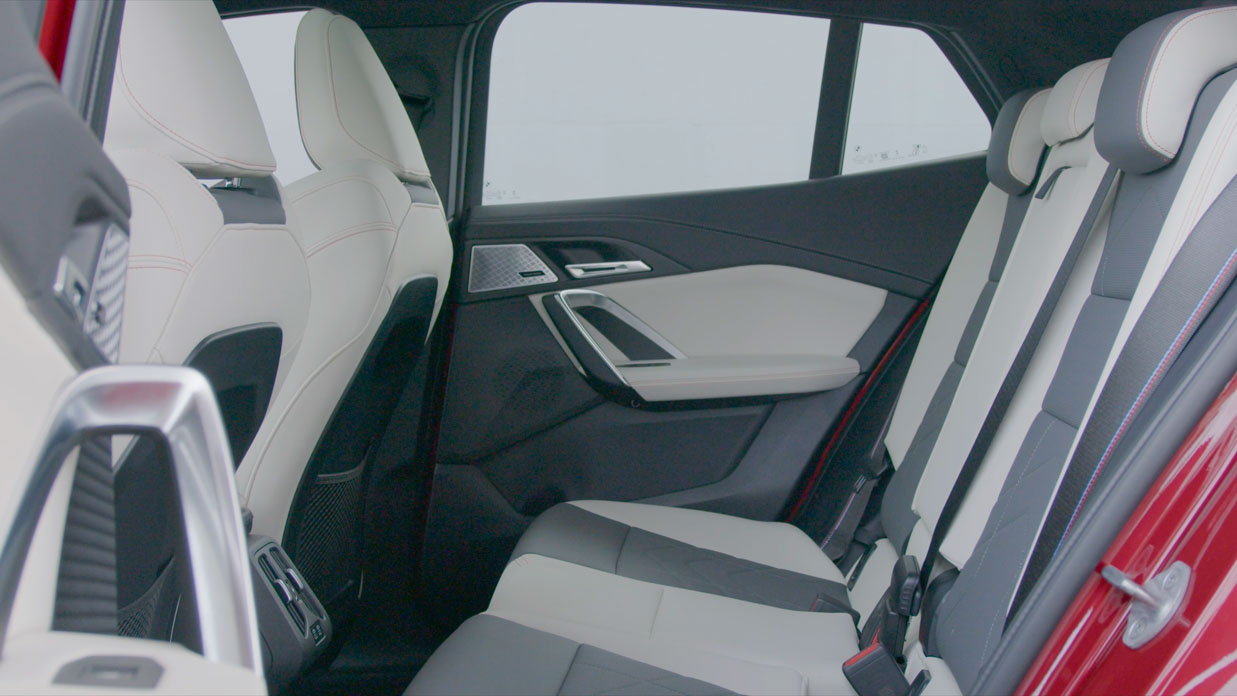
This is a key aspect to bear in mind if cross-shopping against the iX1 – if you prefer the sportier aesthetic and ‘SAC’ styling of the iX2 then it likely won’t be quite as pleasant for tall rear-seat passengers if you plan on utilising the second-row regularly.
In terms of its boot capacity and amenities, the iX2 comes equipped with a power tailgate which reveals a relatively decent sized 525 litres of boot space.
The load lip is a bit higher and there is no spare wheel, however you do get an underfloor section for storing charging cables.
There is also no form of frunk on the iX2.
As of May 2024, the BMW iX2 has not been crash tested by ANCAP, however its closely related iX1 sibling was crash tested in 2022 and scored a maximum five-star result.

The iX2 also comes with a full suite of passive and active safety features including the likes of:
Based on initial impressions during my launch drive, I found the iX2’s active safety systems to be well calibrated and not overly intrusive.
The BMW iX2 can be purchased with a six-year unlimited kilometre service package for $2200.
Service intervals aren’t set, but rather they are conditional based on the vehicle’s conditional based service monitoring system.
In terms of warranty, the iX2 is covered by BMW’s five-year, unlimited kilometre warranty, with the battery covered by an eight-year 160,000km warranty.
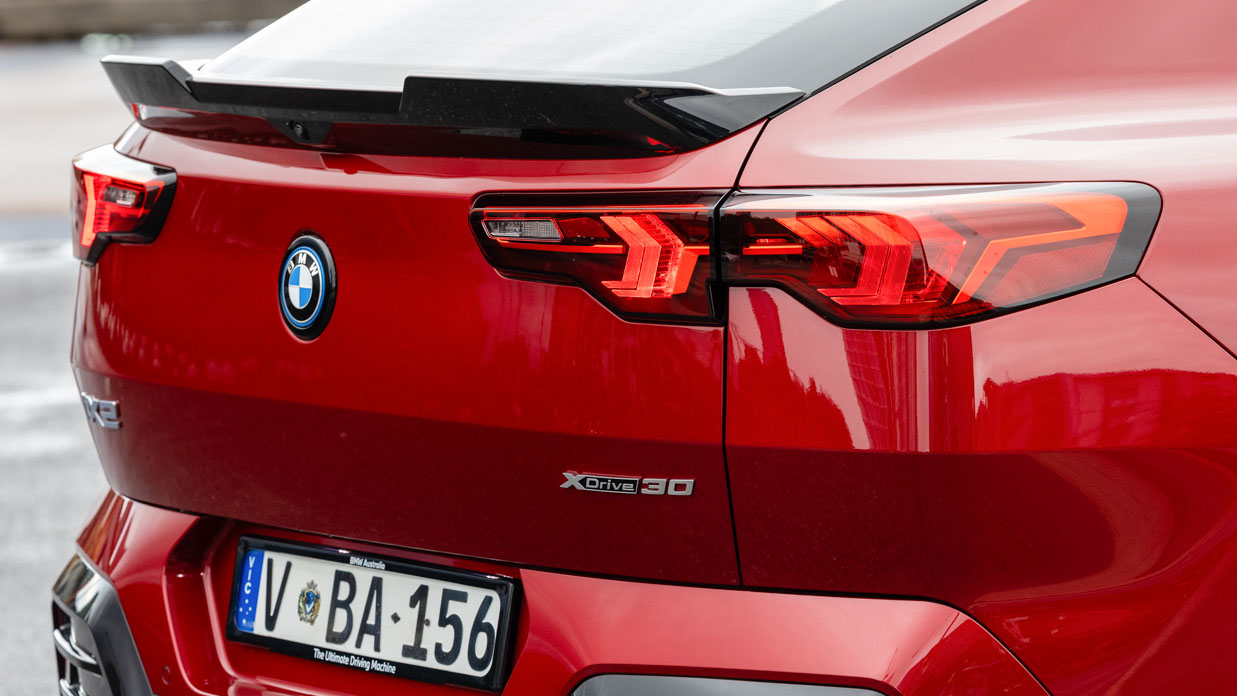
When it comes to charging, the iX2 has a maximum DC charging speed of 130kW and BMW says it can be charged from 10 to 80 percent in less than 30 minutes.
Connecting the iX2 to an 11kW AC wallbox will take about 6.5 hours to charge the vehicle, whilst utilising the maximum 22kW AC charging speed will reduce this to less than four hours.
BMW also includes a 12-month Chargefox public subscription with the iX2.
Having completed our launch drive, I walk around from the BMW iX2 with the impression of what feels like a competent, well-rounded electric SUV, albeit one with styling that won’t be to all tastes.
If you want something that feels and looks premium, delivers strong performance, and stands out from the regular SUV crowd, this could be it.
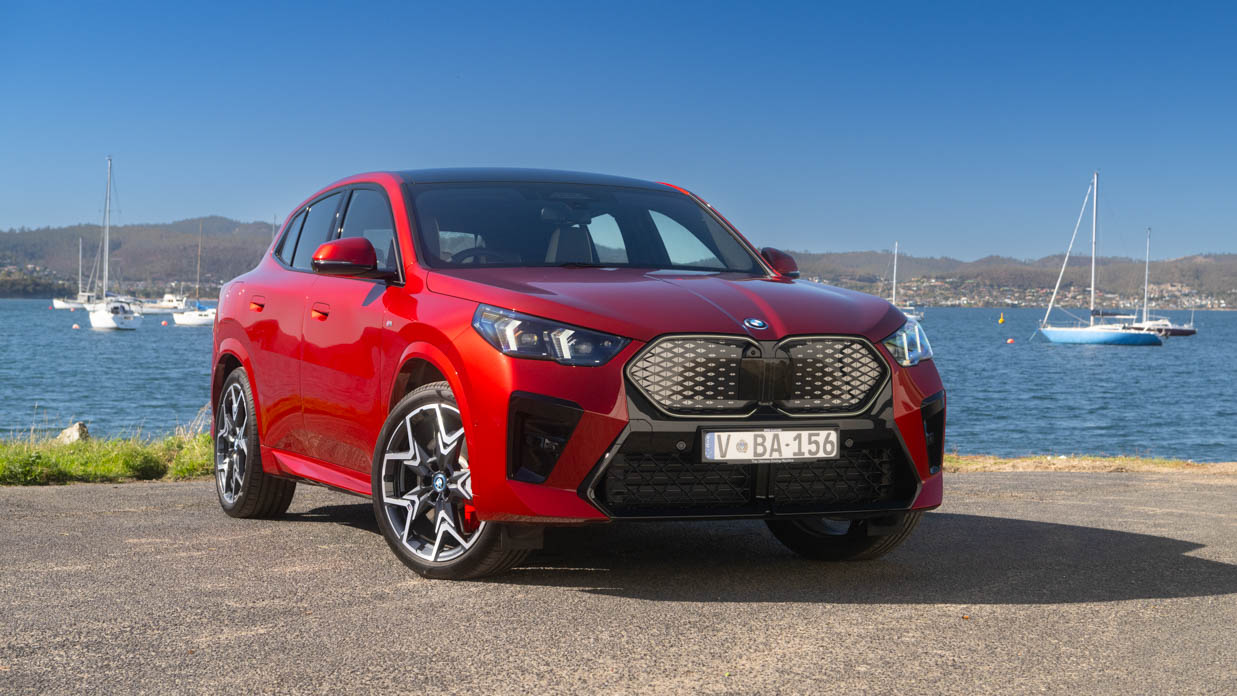
The iX1/X1 will no doubt appeal to a greater subset of buyers for its more conventional SUV-like styling, and corresponding practicality advantages, but if your focus isn’t on maximum practicality it is a subjective quesiton of which design you prefer.
We look forward to getting it into the Chasing Cars garage for a longer stint to deliver a more definitive assessment and complete our official range and efficiency test, as well as sampling the single-motor eDrive20.
Key specs (as tested)
About Chasing cars
Chasing Cars reviews are 100% independent.
Because we are powered by Budget Direct Insurance, we don’t receive advertising or sales revenue from car manufacturers.
We’re truly independent – giving you Australia’s best car reviews.
The estimate provided does not take into account your personal circumstances but is intended to give a general indication of the cost of insurance, in order to obtain a complete quote, please visit www.budgetdirect.com.au. Estimate includes 15%^ online discount.
^Conditions Apply
Budget Direct Insurance arranged by Auto & General Services Pty Ltd ACN 003 617 909(AGS) AFSL 241 411, for and on behalf of the insurer, Auto & General Insurance Company Limited(ABN 42 111 586 353, AFSL 285 571).Because we don’t know your financial needs, we can’t advise you if this insurance will suit you. You should consider your needs and the Product Disclosure Statement before making a decision to buy insurance. Terms and conditions apply.
Indicative quote based on assumptions including postcode , 40 year old male with no offences, licence suspensions or claims in the last 5 years, a NCD Rating 1 and no younger drivers listed. White car, driven up to 10,000kms a year, unfinanced, with no modifications, factory options and/or non-standard accessories, private use only and garaged at night.
^Online Discounts Terms & Conditions
1. Discounts apply to the premium paid for a new Budget Direct Gold Comprehensive Car Insurance, Third Party Property Only or Third Party Property, Fire & Theft Insurance policy initiated online on or after 29 March 2017. Discounts do not apply to optional Roadside Assistance.
2. Discounts do not apply to any renewal offer of insurance.
3. Discounts only apply to the insurance portion of the premium. Discounts are applied before government charges, taxes, levies and fees, including instalment processing fees (as applicable). The full extent of discounts may therefore be impacted.
4. We reserve the right to change the offer without notice.